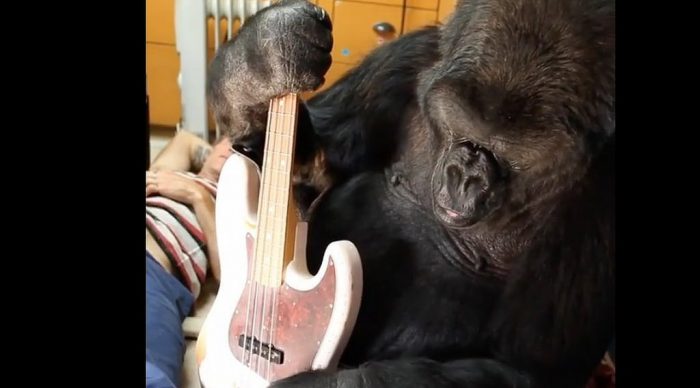Can Animals Learn a Second Language?
You may be about to run out of plausible excuses for not learning a language. Because if animals can learn a second language, then why can’t you? So many members of the animal kingdom have learned to mimic, understand, or communicate in languages in addition to their own unique ways of communicating. Here are just a few to put you to shame — and hopefully to inspire you to start learning!

Photo via Flickr / Flickr
Primates
We all know Koko, the beautiful gorilla whom we lost at the age of 46, who changed the way we think about how animals use language. Over her lifetime, Koko accumulated an extensive vocabulary. The Gorilla Foundation says that she could communicate using around 1,000 words of sign language, and understood about 2,000 spoken English words.
Koko became such an effective communicator that she gained an international following. Her demonstrating that great apes acquire language in a similar manner to young children, and that they also share a sense of humour and mischief as well, is great evidence that animals can indeed learn a second language.
Learning a new language? Check out our free placement test to see how your level measures up!
Similarly, Tilda the orangutan was shown to mimic human speech, and learned to communicate with those responsible for her care through a series of whistles, claps, and deep-throated garbles. Not the most sophisticated of language, perhaps, but effective communication nonetheless!

Photo via Wikimedia / Wikimedia
Birds
Birds can apparently learn a second language from their peers! A study by the University of Bristol shows that birds learn to recognise the warning calls of other bird species. A group of fairy wrens were monitored, and over the study demonstrated that they had learned to react to the warnings of thornbills when predators were nearby.
Researchers from the study suggest this is the equivalent of humans learning the word for warning in other languages, like achtung in German, or cuidado in Spanish. Is this enough to say that animals can learn a second language? Perhaps not as the only example! Though recognising language that signals danger is near is useful, right?
Another example of birds understanding language is Alex, the African grey parrot who was trained by Irene Pepperberg of Harvard University. Alex was quick to pick up new English words, learning to mimic them with ease. He stole the hearts of many by learning to say I love you, and even used to wish his trainer goodnight when they finished their daily training.

Photo via Pixabay / Pixabay
Dogs
When dogs learn the commands we teach them, is that something we can consider language acquisition? Or just a demonstration that dogs know what to do to earn themselves treats and belly rubs? Well, here is some evidence to draw your own conclusions from. This dog featured on ABC News back in 2011 showed clear comprehension of all the names of her toys, with her owner claiming her vocabulary was around 1,000 words.
Continuing with the theme of dogs recognising the words for objects, scientists at Emory University say that dogs can possess a basic understanding of words they’ve learned to associate with objects within a period of between two and six months. And while it is true that dogs do still learn best with visual cues, like those tasty snacks they’re after in response for giving their owners a paw for example, try bringing a dog into the home of someone who speaks a language other than their language. They’ll be picking up the words fo walk, bed, and treat in no time!
And if the wolves of our world speak 21 different dialects, which pack members surely have to pick up the nuances of if they come into contact with new packs, why can’t our favourite domesticated four-legged friends know a language or two as well?
Naysayers
Of course, the discussion about whether animals can acquire language or not is a conflicted one that is still ongoing. Some linguists suggest that because animals don’t use negation or ask the question why, they are simply incapable of language acquisition. Though listen to the human-like sounds produced by the beluga whale Noc in the Vancouver Aquarium, or the mimicked speech of Korean elephant Koshik, and we think you’ll be convinced otherwise!
And either way, these animals are all demonstrating communication that is secondary to their own language, that they’ve had to learn. So seriously. If they can learn a second language, then why can’t you?
